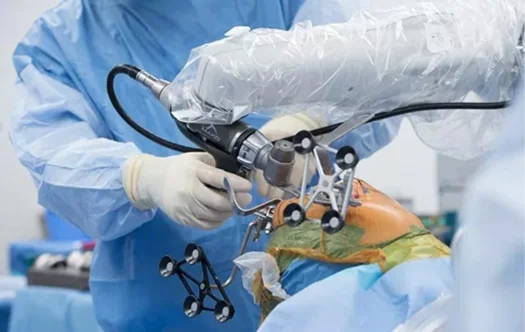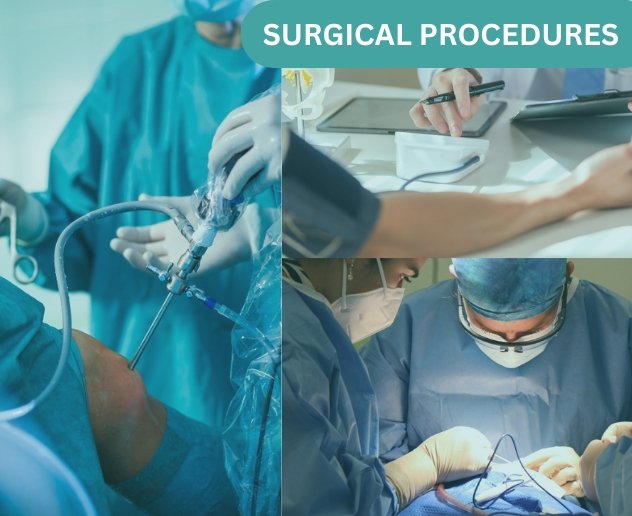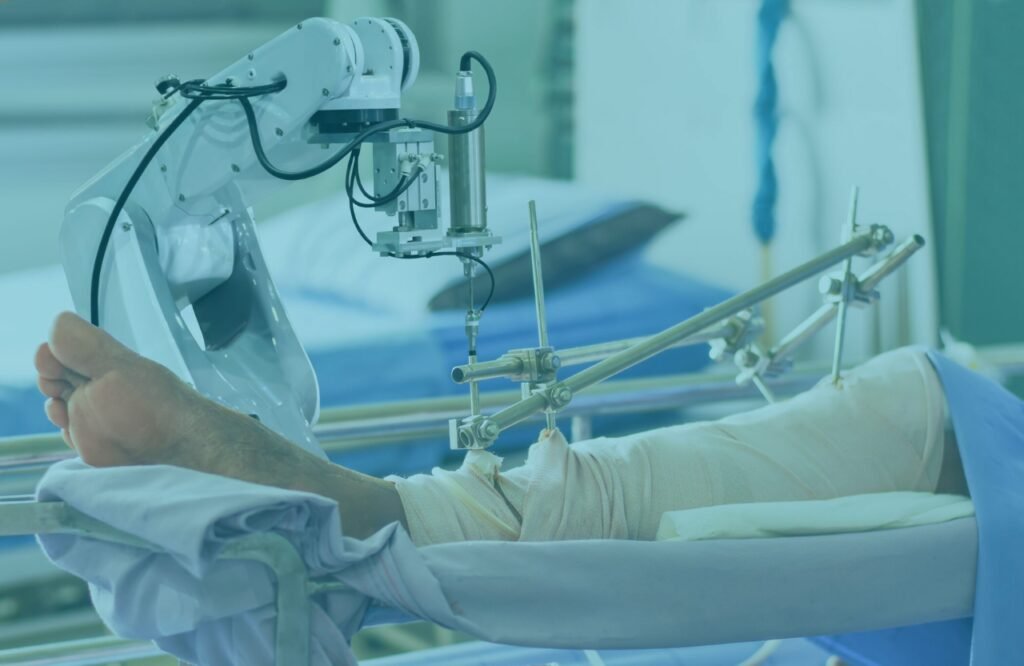ROBOTIC KNEE REPLACEMENT

Precision, Faster Recovery &Improved Mobility

Knee pain and mobility issues can significantly impact daily life, making even simple activities challenging. Dr Piyush Damor is an orthopaedic surgeon who focuses on robotic knee surgery. This complex surgery increases accuracy, lowers recovery times, and offers long-term solutions. With the help of advanced robotic technology, patients who undergo robotic knee replacement can now receive precision like never before, which was not possible with conventional knee replacement surgeries.
SYMPTOMS
pain & tenderness
Swelling and Bruising
Popping Sensation
Limited Mobility or Inability to Bear Weight
Numbness, Tingling, or Weakness
Open Wounds or Bone Exposure
Types of Robotic Knee Replacement Surgery
1. Partial Knee Replacement
This procedure replaces only the damaged portion of the knee, preserving healthy bone and tissue, leading to quicker recovery and less pain. It is ideal for patients with localized arthritis in one knee compartment.
-
 01. Medical History and Pre Examination
01. Medical History and Pre ExaminationReview previous injuries, chronic diseases, and the state of the joints.
-
 02. Imaging Tests
02. Imaging TestsX-rays, MRI, or CT scans offer advanced imaging techniques that help form a 3D model of the knee joint.
-
 03. Personalized Treatment Plans:
03. Personalized Treatment Plans:A customized surgical plan crafted clinically is an optimal diagnostic-based plan.
Pre Surgical
Evaluation
Surgical
Procedures
-
 01. Bone Preparation
01. Bone PreparationThe damaged bone and the cartilage are removed with utmost care, protecting the opposing healthy structures.
-
 02. Implant Placement
02. Implant PlacementThe robotic system adjoins the knee implant at an accurate position for exact fit and alignment to the rest of the knee joint.
-
 03. Closure and Recovery
03. Closure and RecoveryThe operation site's closure takes minimal incisions, allowing for lesser scarring and promoting additional healing speed.

Review previous injuries, chronic diseases, and the state of the joints.
X-rays, MRI, or CT scans offer advanced imaging techniques that help form a 3D model of the knee joint.
A customized surgical plan crafted clinically is an optimal diagnostic-based plan.

The damaged bone and the cartilage are removed with utmost care, protecting the opposing healthy structures.
The robotic system adjoins the knee implant at an accurate position for exact fit and alignment to the rest of the knee joint.
The operation site's closure takes minimal incisions, allowing for lesser scarring and promoting additional healing speed.

After care for Orthopedic Trauma Surgery
Dr Piyush Damor formulates an all-inclusive rehabilitation program which includes pain control medications to lessen distress and pain. Also recommends Physical Therapy activities to improve mobility and strengthen the muscles around the knee joint along with walking, bending, and daily activity execution.

After care for Robotic Knee Replacement Surgery
Dr Piyush Damor formulates an all-inclusive rehabilitation program which includes pain control medications to lessen distress and pain. Also recommends Physical Therapy activities to improve mobility and strengthen the muscles around the knee joint along with walking, bending, and daily activity execution.
Regain Your Active Lifestyle!
Experience precision, faster recovery, and long-term relief with advanced robotic-assisted technology. Don’t let knee pain hold you back—Schedule a consultation today and move towards a healthier, pain-free future!
